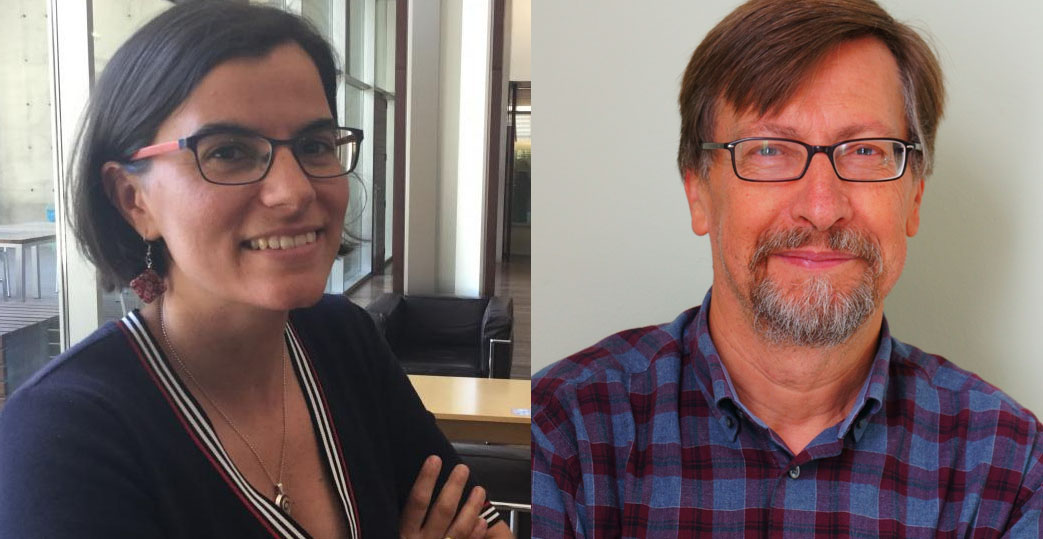
10/08/2020 - Covid-19
This has been demonstrated by a joint study between the IMIM and IDIAPJGol, which reveals that the districts in the city of Barcelona that have the lowest average income were the most affected by the first wave of the pandemic
The COVID-19 pandemic that, according to data from the Ministry of Health, has caused nearly 30,000 deaths in Spain, is hitting the most impoverished neighbourhoods the hardest, as confirmed by a study recently published in the Journal of Public Health and led by researchers from the Hospital del Mar Medical Research Institute (IMIM) and IDIAPJGol. The work reveals that, during the peak of the epidemic in the city of Barcelona, the district with the lowest average income, Nou Barris, recorded an incidence of cases 2.5 times higher than that of the district with the highest income, Sarrià-Sant Gervasi.
The work took into account the incidence of cases recorded by age between 26 February and 19 April, one of the peak periods of the disease in Barcelona, and compared this with the average income data by district. In total, almost 9,000 cases were analysed. The results highlight a direct relationship between lower income and a higher number of COVID-19 cases.
Direct relationship between COVID-19 and poverty
"People from lower socioeconomic levels are suffering this disease the most", explains Dr. María Grau, principal investigator and member of the Research Group on Cardiovascular Epidemiology and Genetics at the IMIM and the CIBER Epidemiology and Public Health network (CIBERESP). In this case, the difference in cases between the lowest and highest income district was almost 1,000 cases, a difference of two and a half times. "The results show that efforts to contain the epidemic cannot ignore health equity issues", says Dr. Grau, who adds that "more effort must be made in the neighbourhoods with the most vulnerable populations. In these cases, ensuring equal treatment opportunity is key, but so is financial protection during this period. If the vicious circle of poverty and disease is not broken, local problems of health inequity will remain or be compounded in areas affected by the epidemic.
The northern districts of Barcelona, Nou Barris and Horta Guinardó, the city's lowest income districts, recorded the highest incidence of COVID-19 cases, with 1,440 and 1,400 cases (rates of 75.48 and 70.39 cases per 10,000 inhabitants). The only exception in this area was the district of Sant Andreu, a difference that may be explained by the high percentage of residents aged under 25 (1 in 4). The situation in Ciutat Vella should also be highlighted, with only 273 cases, reflecting the significant amount of tourism, a young population and non-resident foreigners. In contrast, the highest-income districts, Sarrià-Sant Gervasi and Les Corts, were among the least affected, with just 451 and 317 cases (rates of 28.94 and 34.94 cases per 10,000 inhabitants).

Map showing the 10 districts of Barcelona, classified by quartiles (Q) of mean income in euros (Q1 < 17 418; Q2 ≥ 17 418 and < 18 910; Q3 ≥ 18 910 and < 25 874; Q4 ≥ 25 874) and showing the age-standardized incidence rate (95% CI). Base layer extracted from icgc.cat.
Less income and greater exposure to coronavirus
The current pandemic has increased health problems related to access to the labour market. Most of the residents in the most severely impacted neighbourhoods have jobs that do not allow them to work remotely, forcing them to travel to work on public transport, despite recommendations to stay at home, which multiplies the possibilities of contagion. There is also a clear link between housing and the incidence of the disease, with worse living conditions, overcrowding and shared housing in the worst-affected districts. Conversely, the authors of the study point to the availability of second homes outside the city as a factor to be considered when analysing the low incidence data recorded in the city's highest-income districts. Dr. José Miguel Baena-Díez, researcher at IDIAPJGol (La Marina primary healthcare centre) and first author of the paper, explains that "It is essential to apply health education policies that promote better understanding and implement preventive measures against infection, especially among the most at-risk populations, such as the most deprived neighbourhoods".
Dr. Juan Pablo Horcajada, head of the Infectious Diseases Service at Hospital del Mar, appreciates the importance of this work, stating that "It is very interesting, among other reasons, because it provides new information on the epidemiological behaviour of the SARS-CoV-2 virus. The results are in line with other studies that correlate increased COVID-19 mortality with patients from less-privileged areas. This information should be very useful for planning even more efficient preventive and educational action in cities and regions, taking into account the socioeconomic reality of the different districts and areas."

Photo: Maria Grau and José Miguel Baena-Díez. Font: IMIM
Reference article
Baena-Diez JM, Barroso M, Cordeiro-Coelho S, Díaz JL, Grau M. Impact of COVID-19 outbreak by income: hitting hardest the most deprived. J Public Health (Oxf). 2020. https://doi.org/10.1093/pubmed/fdaa136
Servei de Comunicació:
Marta Calsina(ELIMINAR)
Tel:
(+34) 93 316 06 80
Doctor Aiguader, 88
08226 Barcelona
© Institut Hospital del Mar
d'Investigacions MèdiquesLegal Notice and Privacy Policy | Cookie Policy | Site Index | Accessibility | Find Us | Contact